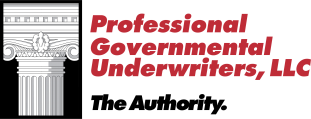How Can Public Entities Better Manage Risk?

What Does Active Shooter Insurance Cover? Insights for Educational Institutions
May 15, 2024
Legal Responsibilities and Risks for Public Schools
June 1, 2024How Can Public Entities Better Manage Risk?
Managing risk is a critical component for any public entity, and understanding public entity coverage is essential for effective risk management. Public entity insurance provides protection against various liabilities that public entities face, ensuring they can operate smoothly without unexpected financial burdens.
Exploring Public Entity Insurance
A public entity includes local governments, municipalities, and other governmental organizations. Public entity insurance protects governmental assets and operations. It covers a range of risks, from property damage to liability claims, providing a safety net for public officials and employees.
The significance of public entity coverage lies in its ability to safeguard against unforeseen events that could disrupt public services. By having comprehensive coverage, public entities can focus on their primary responsibilities without the constant worry of potential liabilities.
Assessing Potential Risks for Public Entities
Effectively managing risk requires a thorough assessment of potential liabilities specific to public entities. Here are some strategies to consider:
Conducting Thorough Risk Assessments
Insurance agents should work closely with public entity officials to conduct comprehensive risk assessments. This process involves evaluating various aspects of the entity’s operations, including infrastructure, services provided, and potential exposures to liabilities.
Reviewing Historical Data
Analyzing past incidents and claims provides valuable insights into recurring risks and areas for improvement. By reviewing historical data, insurance agents can identify patterns and trends that may indicate potential liabilities for the public entity.
Engaging With Stakeholders
Collaborating with stakeholders, including public officials, employees, and community members, helps insurance agents gain a deeper understanding of the unique risks faced by the public entity. By soliciting input from various stakeholders, agents can uncover potential liabilities.
Staying Informed About Regulatory Changes
Public and government entities are subject to various changing regulations and legal requirements that may impact their liability exposure. As a result, the public entity insurance definition and standard coverage types also often change.
Insurance agents should stay informed about relevant regulatory changes and updates to ensure the public entity remains compliant and adequately protected against potential liabilities.
Proactive Risk Mitigation for Public Entities
Proactive risk mitigation is essential for public entities to manage and reduce potential risks. Here are some best practices for insurance agents to recommend:
- Customized insurance coverage: Tailoring insurance policies to address the specific risks faced by the public entity
- Safety protocols and training programs: Establishing and maintaining safety protocols and conducting regular training programs for employees to prevent accidents and incidents
- Incident reporting mechanisms: Implementing effective incident reporting systems to ensure timely and accurate documentation of any issues that arise
- Annual policy reviews and updates: Regularly reviewing and updating insurance policies to reflect any changes in the entity’s operations or risk profile
Enhanced Risk Management for Public Entities
Comprehensive insurance coverage helps with effective risk management in public entities. By understanding the intricacies of public entity coverage, insurance agents can help public officials and entities enhance their overall risk management practices.
This undertaking includes conducting thorough risk assessments, staying informed about regulatory changes, and implementing proactive mitigation strategies.
Empowering public entities with the right insurance solutions enables them to manage risks more effectively, ensuring they can continue to serve their communities efficiently and safely.
Get in Touch
For more information on how to optimize risk management through comprehensive public entity coverage, contact us today.
About PGUI
Professional Governmental Underwriters, LLC., is a full-service risk management company dedicated to assisting public, educational, and non-profit entities in the management of their professional liability exposures, including educators liability insurance. We are dedicated to providing state-of-the-art professional underwriting management and loss control advisory services on behalf of our designated carriers. For more information, call us toll-free at (800) 586-6502.


